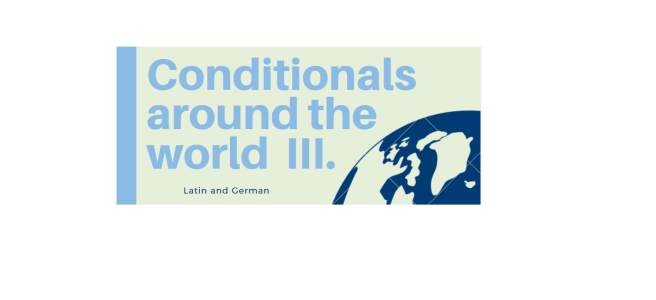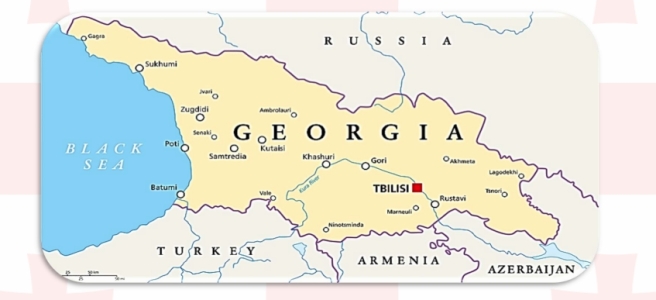Nikolett Kiss’s presentation about how null subject pronouns are acquired by Spanish speakers.
Author: DEL UNIDEB
With or without the verbal particle? Do you lájkolod ’like.2sg’ or belájkolod ’prt.like.2sg’ my presentation?
Eszter Sára Nagy investigates the the behavior of verbs of English origin that are used in Hungarian (internet) slang.
Conference programme 2021
Start: 22 April, 4 pm.
Programme:
Rebeka Karajos – Variation in the acceptability of overt subjects in Hungarian controlled clauses
Viktória Virovec – The modal analysis of fog
Victoriia Osovskaia – Distributive and collective reading of comitative constructions with animate nouns in Russian
— short break —
Gréta Barna – ‘Csak neki’ or ‘csak annak’? Back-reference to [-human] antecedents in Hungarian
Sevara Butaeva – Verb agreement with collective nouns in British and American English
Erzsébet Széles – How native English-speaking learn the past tense verbs
Presentations will be 20–30 mins each including discussion
Webex meeting link:
https://unideb.webex.com/unideb/j.php?MTID=m789793893424ae4290c800cfe9b4ce2d
How native English-speaking children learn the past-tense verbs
Erzsébet Széles investigates how the English past tense is acquired by babies.
Verb agreement with collective nouns in British and American English
Sevara Butaeva investigates cross-dialectal variation connected to verb agreement with collective nouns in English.
The modal analysis of “fog”
Viktória Virovec examines questions related to the modality of the Hungarian fog.
Variation in the acceptability of overt subjects in Hungarian controlled clauses
Karajos Rebeka investigates the variable acceptability of overt subjects in Hungarian controlled clauses.
‘Csak neki’ or ‘csak annak’? Back-reference to [-human] antecedents in Hungarian
Barna Gréta The presentation discusses the results of a survey which examines back-reference to [-HUMAN] singular and plural antecedents where the co-referring pronoun in each sentence is in focus position. The main research question is: Is it possible for a [+HUMAN] pronoun, which is focused, to refer to a [-HUMAN] antecedent?
Distributive and collective reading of comitative constructions with animate nouns in Russian
Viktoriia Osovskaia
This presentation examines the most acceptable types of readings for Russian comitatives.
Mixed conditionals around the world IV
Zelenka Andrea & Sándor Kamilla: Mixed conditionals around the world IV: Arabic
Just when you thought the tour was over, the authors treat us to a bonus episode on Arabic conditionals.
Adjectival articles in Albanian
Barbara Boros: Adjectival articles in Albanian.
This presentation provides a thorough description of the grammar of an interesting functional element in Albanian adjectival phrases.
Mixed conditionals around the world III.
Marcell Bendegúz Borsos, Réka Szemán: Mixed conditionals around the world III.
The tour dedicated to conditionals around the world concludes with German and Latin.
The Dyirbal language
Galgóczy Vivien: Dyirbal language
Dyirbal is a near-extinct Australian Aboriginal language whose noun class system inspired the title of Lakoff’s seminal book Women, fire, and dangerous things. The presentation gives an overview of the typological features of the language, and provides a detailed account of the cognitive categories represented by the four noun classes.
Click here to access the presentation.

Latin pronunciation in English
Réka Szemán: Latin pronunciation in English.
Réka Szemán kindly invites you to the only Latin Party which will not be cancelled because of the COVID-19. Our Latin Party’s attraction will be the Latin pronunciation in English, therefore you can become acquainted with the pronunciation systems used in English. Concerning the usage of Latin in English, you can participate in a real chaotic Latin carneval cavalcade too: the formation of the plural of Latin words in English.
Partitivus in Finnish
Barkó Barbara: Partitivus in Finnish.
In this short presentation, Barkó Barbara outlines the basics of using the partitive case in Finnish.
Verbal agreement in the French compound past
Amira Dhifallah: An overview of French Grammar – Verbal agreement in the compound past.
This presentation offers an overview of how grammatical features (e.g. number, gender) are reflected in the agreement patterns of the French passé composé (“compound past”) construction, with special attention to the auxiliaries être and avoir.
Addressing parents
Medárda Bereczki: Similarities between colloquial language and contemporary literature in Hungarian through addressing and referring to parents.
This presentation offers a study of the terms used to address or to refer to the parents in Magda Szabó’s novels, and compares the results to the tendencies that characterise contemporary colloquial Hungarian in this domain.
Inflected infinitives in Portuguese and Hungarian
Andrea Szávó: A comparative account of inflected infinitives in Portuguese and Hungarian.
Portuguese and Hungarian share one peculiar grammatical feature: they both have inflected infinitives. This presentation offers a survey of the contexts in which such infinitives can occur in the two languages, cataloguing the distributional similarities and the differences.
Mixed Conditionals Around the World II.
Sándor Kamilla: Mixed conditionals around the world II (Ukrainian, Slovakian, Polish)
The second stop on our journey is dedicated to conditionals in three Slavic languages, Ukrainian, Slovakian, and Polish.
Ergativity in Georgian
Tamari Narimanishvili: Ergativity of the Georgian language
Ergative languages are languages that share a certain distinctive pattern relating to the subjects of verbs. In this presentation, we will learn about ergative and non-ergative languages with special focus on Georgian.
Fronting in Hungarian
Rebeka Karajos: The Hungarian fronting construction in interrogative sentences.
This presentation reports the results of a questionnaire study that was conducted to see how Hungarian native speakers cope with certain aspects of fronting in Hungarian constructions similar to What did you say (that) John saw? in English.
Mixed Conditonals Around the World I.
Mónika Püski: Mixed Conditionals around the World (Hungarian and Romani)
In the first instalment of a presentation series dedicated to a cross-linguistic overview of the conditional mood, Mónika Püski introduces Hungarian and Romani conditionals.
The Hawaiian Language
Eszter Kajuha: The Hawaiian Language – ʻŌlelo Hawaiʻi.
This presentation offers a tour in the grammar of Hawaiian, as well as an introduction into the history and culture behind the language.
Persian proverbs
Hajian Foroozan: Persian proverbs in bilingualism.
Persian, or Farsi, has many interesting proverbs. This presentation discusses some of these, commenting also on their cultural background and the difficulties they pose for the learner.
The role of Hungarian suffix harmony in loanword adaptation
Gergő Takács: The Role of Hungarian Suffix Harmony in the Adaptation of Foreign Verbs
Loanword adaptation refers to a process whereby the shape of a borrowed word is adjusted to the grammar of the receiving language. This presentation examines some problematic aspects of loanword adaptation with respect to Hungarian vowel harmony.
The question particle in Hungarian
Sándor Kamilla: Where does the Hungarian questions particle –e belong to?
Languages have different means of coding yes-no questions: special intonational patterns, designated word orders, or specific question particles are utilized for the purpose. Such a question particle is used in, for example, Turkish, Yiddish, Latin, Hindi or in Hungarian. These particles are not always obligatory, and their exact position may be subject to variation – as is the case in Hungarian. Sándor Kamilla’s presentation reports a native speaker survey that was conducted to probe into the scale of this variation.

























